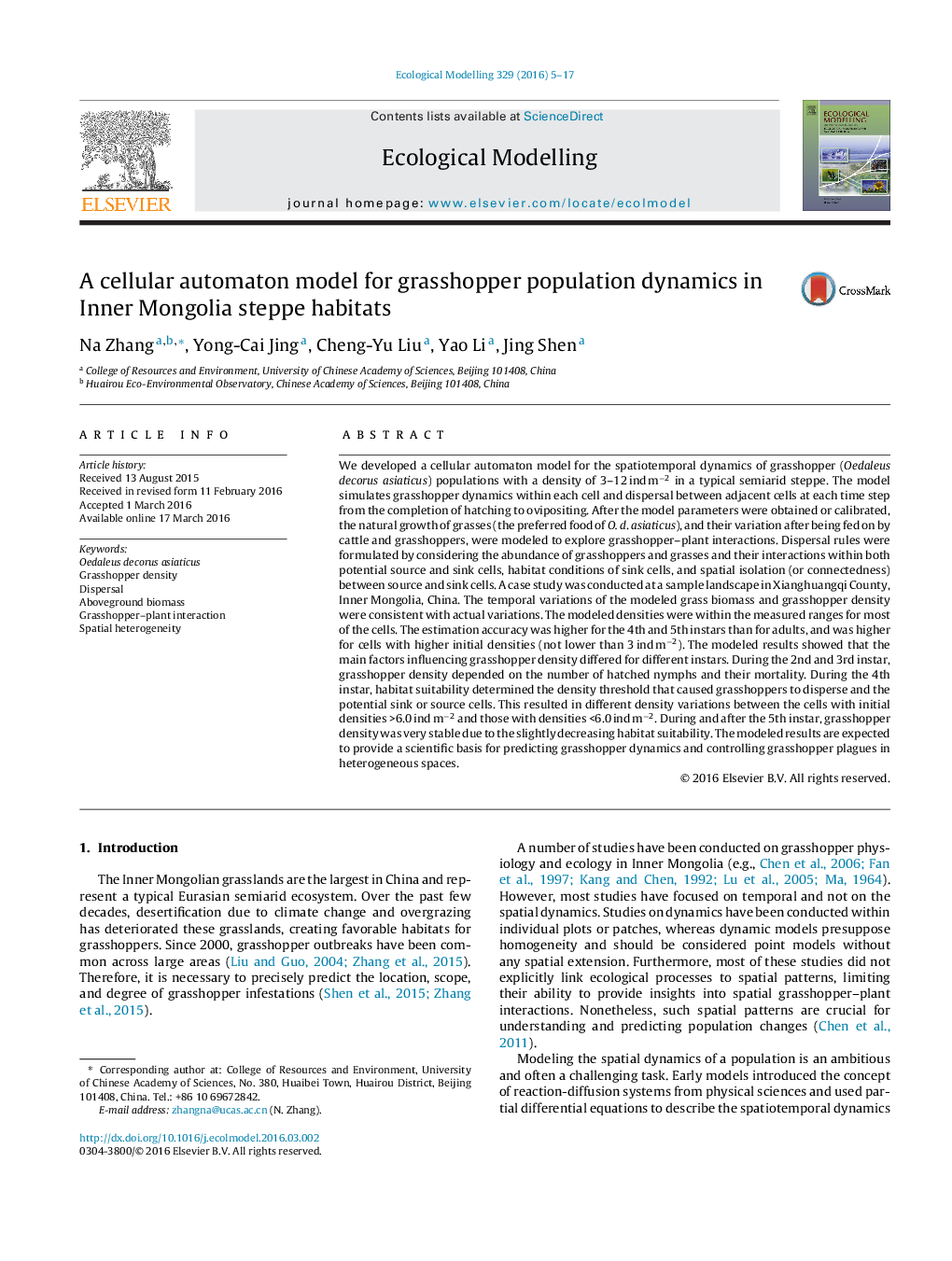| Article ID | Journal | Published Year | Pages | File Type |
|---|---|---|---|---|
| 4375565 | Ecological Modelling | 2016 | 13 Pages |
•We created a cellular automaton model to explore grasshopper populations.•The formulation of spatial dispersal rules was the key of the model.•We modeled the spatiotemporal dynamics of Oedaleus decorus asiaticus.•The model's abilities were confirmed at a typical landscape in Inner Mongolia.•The results may be used to predict grasshopper occurrences and control plagues.
We developed a cellular automaton model for the spatiotemporal dynamics of grasshopper (Oedaleus decorus asiaticus) populations with a density of 3–12 ind m−2 in a typical semiarid steppe. The model simulates grasshopper dynamics within each cell and dispersal between adjacent cells at each time step from the completion of hatching to ovipositing. After the model parameters were obtained or calibrated, the natural growth of grasses (the preferred food of O. d. asiaticus), and their variation after being fed on by cattle and grasshoppers, were modeled to explore grasshopper–plant interactions. Dispersal rules were formulated by considering the abundance of grasshoppers and grasses and their interactions within both potential source and sink cells, habitat conditions of sink cells, and spatial isolation (or connectedness) between source and sink cells. A case study was conducted at a sample landscape in Xianghuangqi County, Inner Mongolia, China. The temporal variations of the modeled grass biomass and grasshopper density were consistent with actual variations. The modeled densities were within the measured ranges for most of the cells. The estimation accuracy was higher for the 4th and 5th instars than for adults, and was higher for cells with higher initial densities (not lower than 3 ind m−2). The modeled results showed that the main factors influencing grasshopper density differed for different instars. During the 2nd and 3rd instar, grasshopper density depended on the number of hatched nymphs and their mortality. During the 4th instar, habitat suitability determined the density threshold that caused grasshoppers to disperse and the potential sink or source cells. This resulted in different density variations between the cells with initial densities >6.0 ind m−2 and those with densities <6.0 ind m−2. During and after the 5th instar, grasshopper density was very stable due to the slightly decreasing habitat suitability. The modeled results are expected to provide a scientific basis for predicting grasshopper dynamics and controlling grasshopper plagues in heterogeneous spaces.
